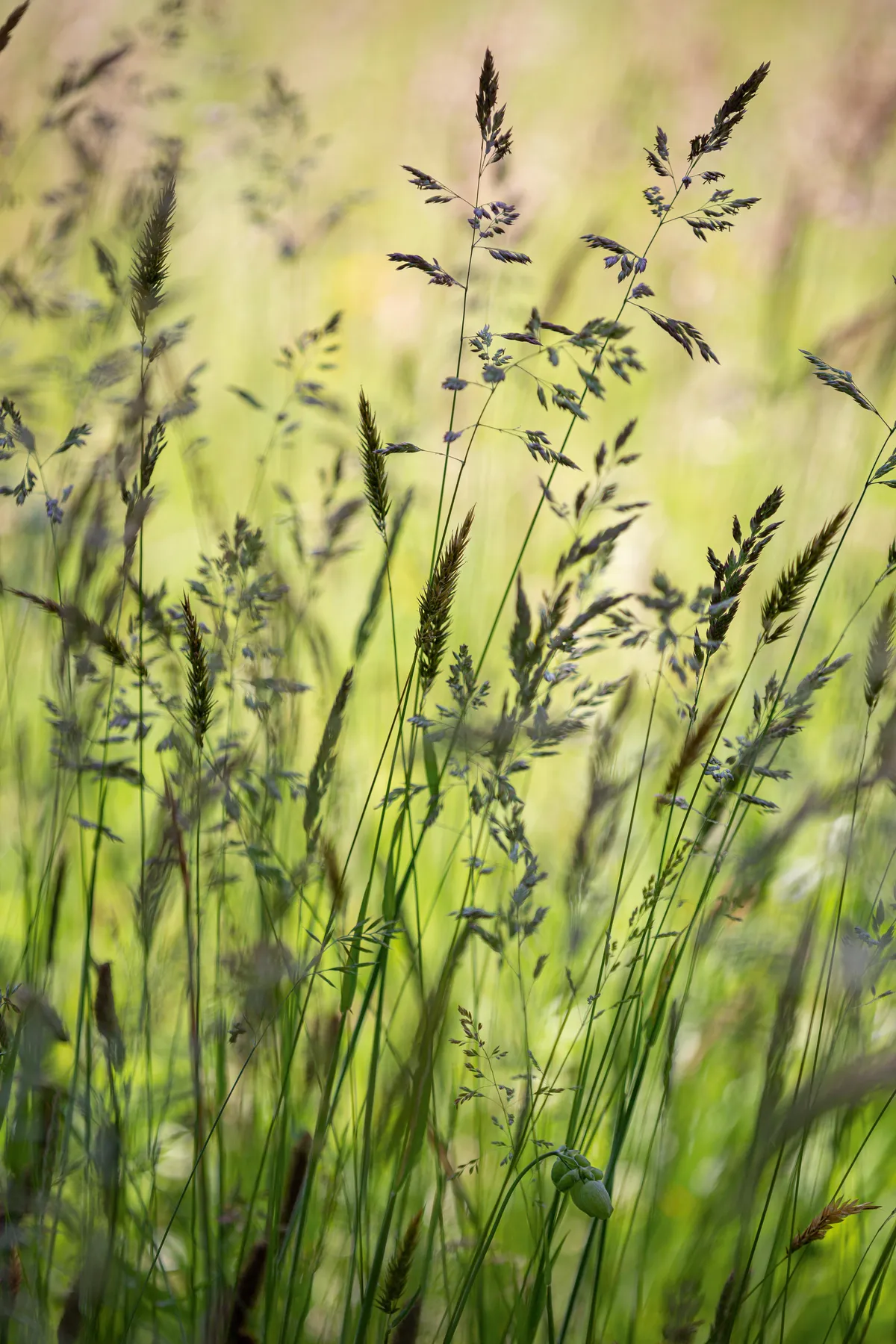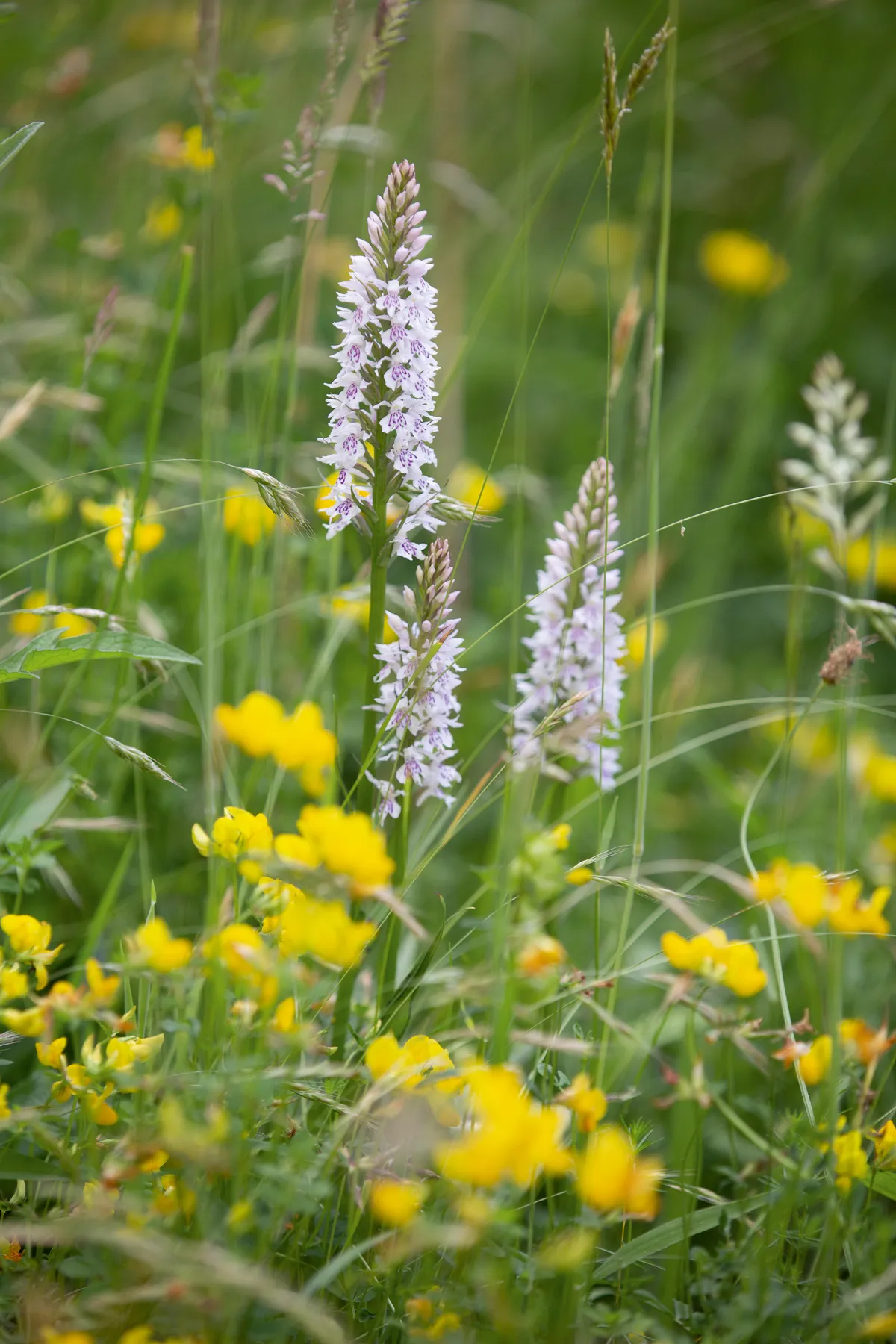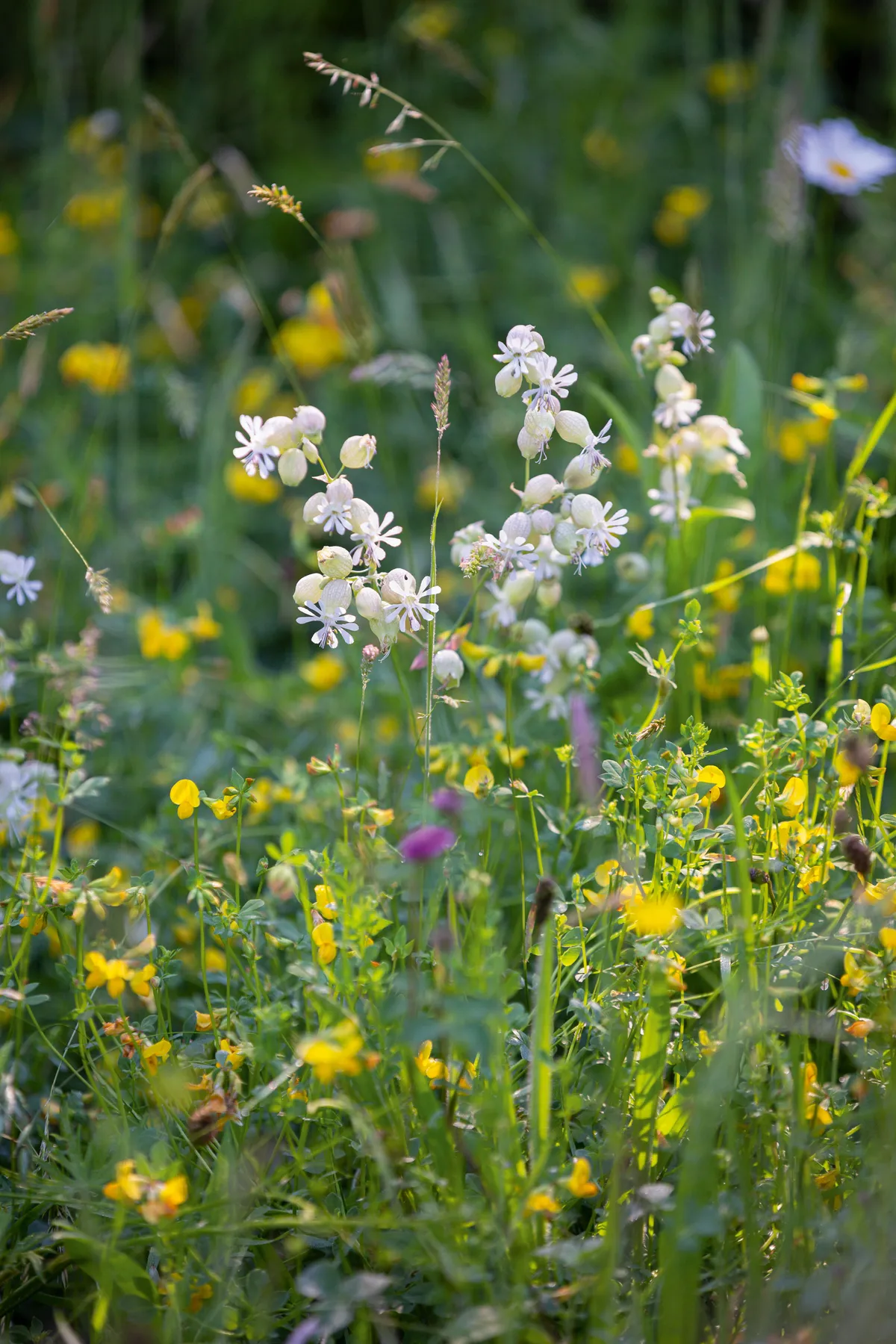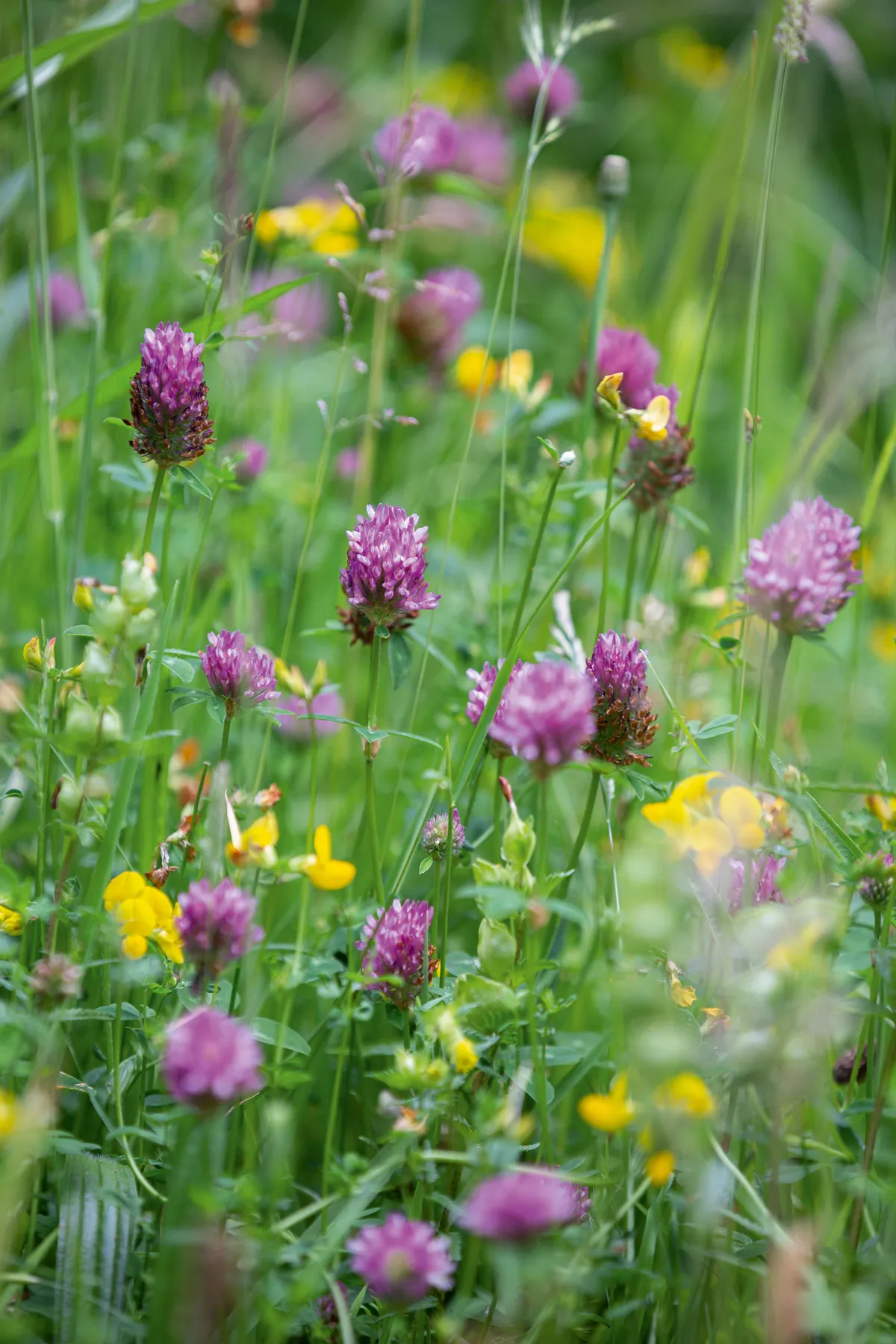Harmony and simplicity are key principles for Greencube Design in Kent, a landscape company with the aim of marrying clients’ interests and lifestyle with their garden. When it came to designing the home patch, therefore – self-dubbed a ‘modern meadow’ for its contrasting hard and soft elements – Amanda Buckland’s love of nature, wildlife and conservation guided the brief. “It’s about giving a bit of space back to nature,” she says, describing her quarter-acre back garden as “a bee and butterfly nectar pot, and a place to rest and to contemplate.”
The garden in brief
What A ‘modern meadow’ contrasting soft wildflowers with contemporary hard surfaces. Where Kent. Size Quarter of an acre. Soil Sandy, free-draining. Climate Temperate. Hardiness zone USDA 8.
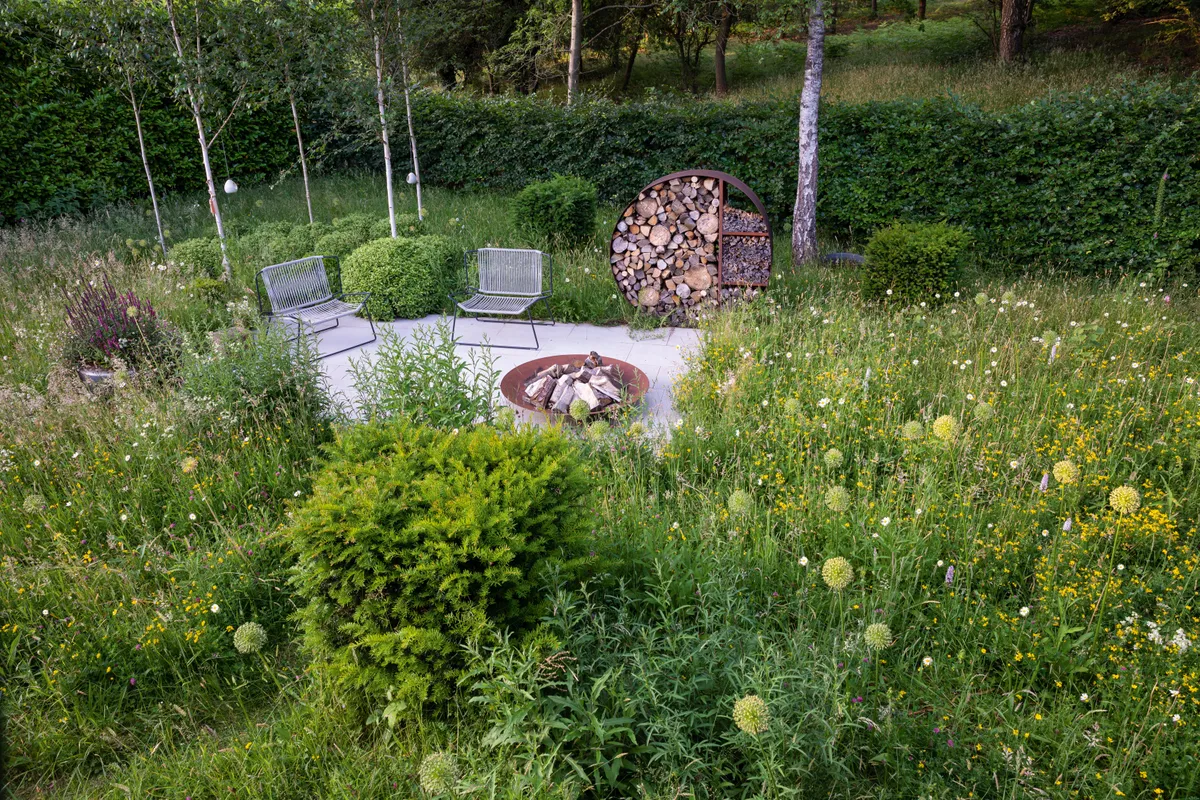
The garden's inspiration
In common with her husband and avid birdwatcher Mike, one of Amanda’s life passions is visiting UK nature reserves for wildflowers and wildlife alike, often photographing resident species. But it was through visiting Great Dixter in East Sussex – where traditional hay meadows have long been managed and maintained – that the idea of a flower-rich haven complemented by formal evergreens took hold. Much like Dixter’s famed topiary, a combination of clipped yew buttresses, pittosporum domes and architectural birch trees add composition to the overall picture, creating structure within the soft floatiness of the meadow.
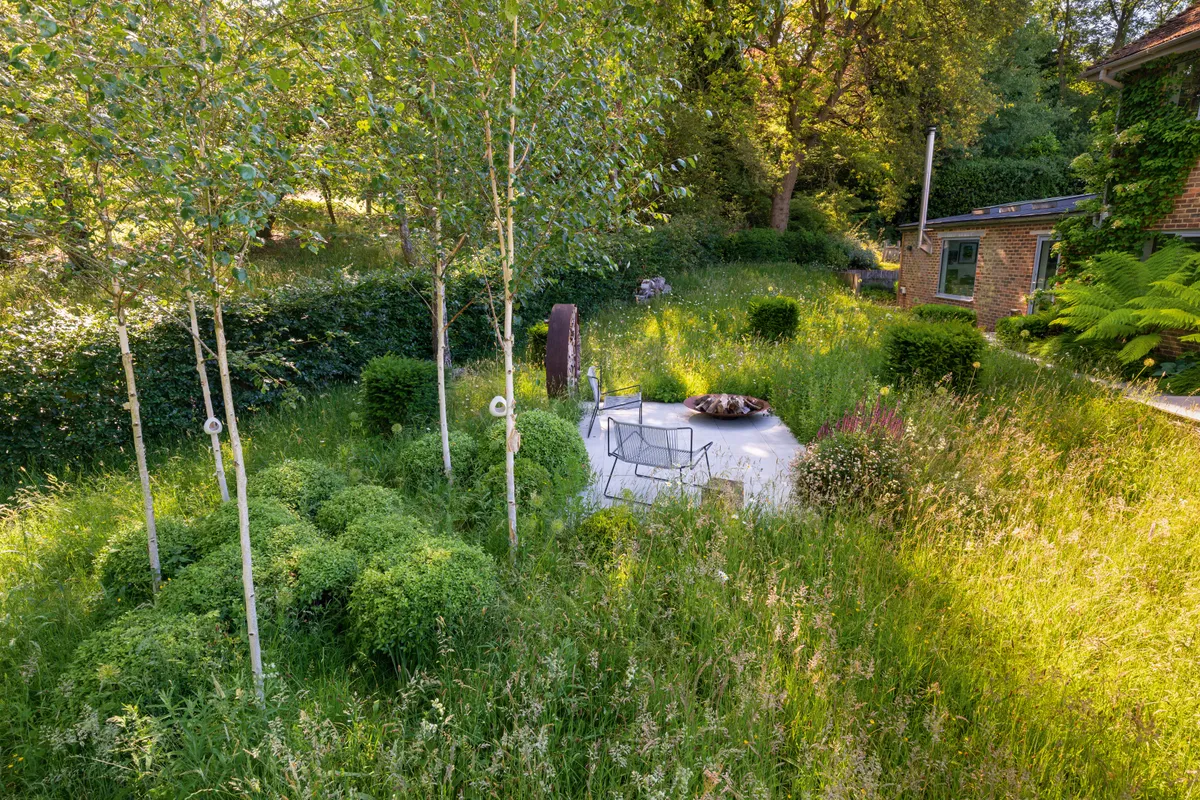
Equally integral is a central terrace of sawn sandstone, which places a seating area within the sunny heart of the meadow, reached via a low-mown path. A bespoke log-store made from weathering Corten steel provides the focal point, rather than a source of firewood, however, the large metal ring, concreted into the ground, serves as a bug hotel for overwintering pollinators. On spring afternoons, with a cup of tea, the terrace is a platform from which to view birds, bees and early butterflies, such as orange-tips and brimstones, flitting over the conspicuous purple-speckled leaves of common spotted orchids. “It’s just a delightful space to sit in, de-stress and to free your mind,” says Amanda.
Going wild
Although Amanda’s meadow has other houses and gardens on either side, to the rear lies an open smallholding once grazed by horses and alpacas, and now overgrown with bracken, hawthorn and birch. “It’s pretty wild – I wanted our garden to connect with that borrowed view,” she says. At the back of the garden a beech hedge is therefore clipped low along the fence line, and a large oak on the boundary gently filters overhead summer sunlight. “Because the meadow faces northeast, there’s a real soft light that comes through the tree. It’s beautiful.”

Owing to the northerly aspect, she has integrated a shady border of elegant tree ferns (Dicksonia antarctica) and climbing Hydrangea anomala subsp. petiolaris within the house terrace, underplanting with soft, airy Hakonechloa macra. These neutral greens offer a gentle transition from terrace to colourful, flower-laden meadow. Even here, provision for nature is a priority: below the sandstone paving lie quartz paddlestones that offer crawlspaces for insects. “It’s like a modern dry-stone wall with sandstone on top,” explains Amanda. “It’s been a great success for woodlice and lacewing either setting up home or hibernating in those little crevices.”
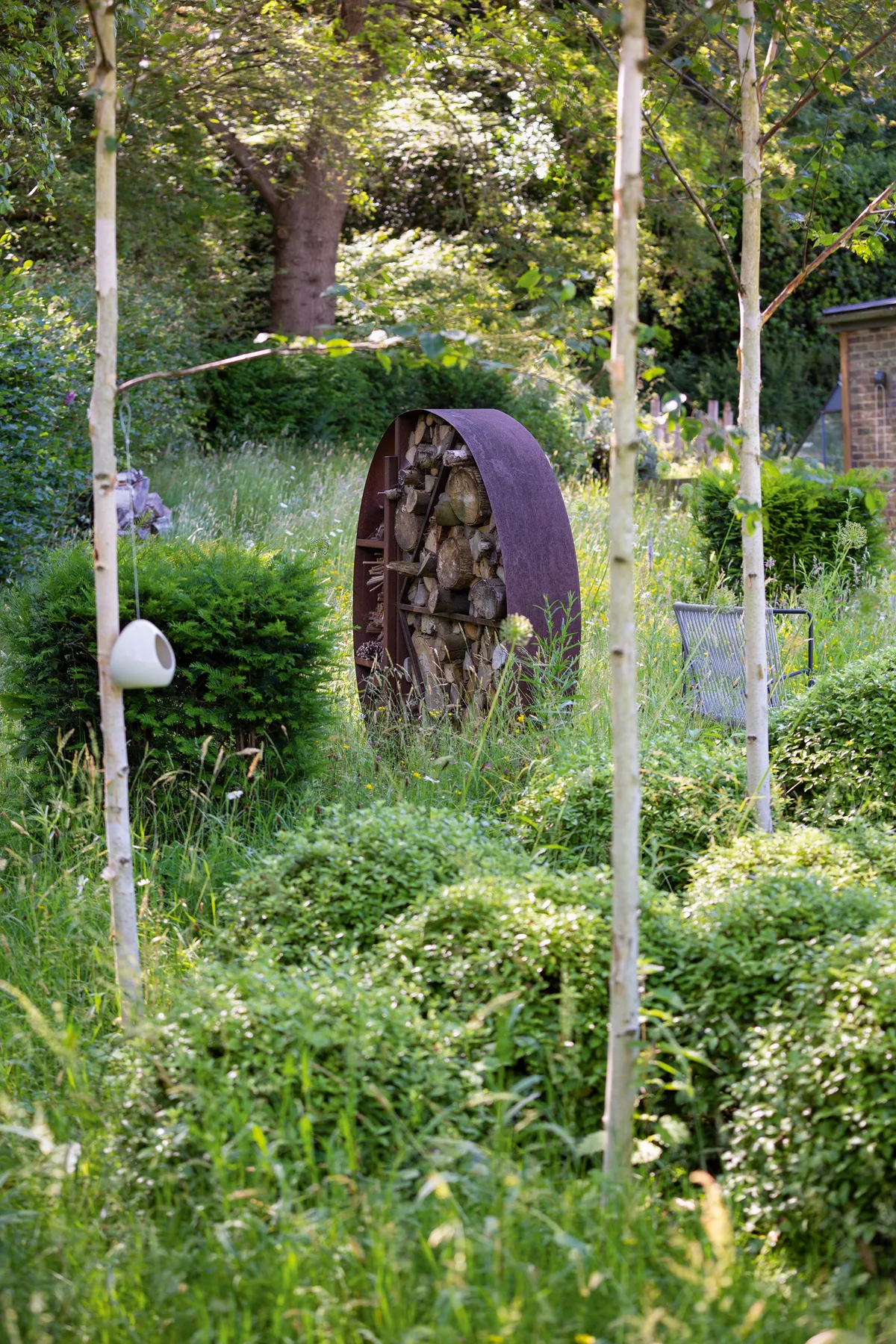
Now approaching its seventh year, the meadow has come a long way since the seed was first cast. “Once seeded, we had to keep the birds off the bare soil,” remembers Amanda. “I put pots on bamboo sticks to act as scarers until the seeds had germinated.” In its first season it was dominated by annual flowers, mostly cornflowers and corn marigolds, which Amanda loved. “But the meadow changes,” she says. “The second year was a mass of oxeye daisies, and now we’ve got common spotted orchids multiplying year on year.”

Among other perennial favourites are the bright yellows of bedstraw, buttercup, bird’s foot trefoil and the creeping racemes of yellow rattle (Rhinanthus minor), which Amanda tops up annually. “Yellow rattle weakens dominant grasses, so we’ll scratch the ground and resow it each year, but also add in plug plants. Meadows aren’t easy – they do need work to be successful.” The rewards, however, are clearly manifold: not only a resource for diverse fauna including slow worms, butterflies, moths, hedgehogs and pipistrelle bats, the meadow has inspired numerous clients to accommodate an area of wildflowers in their own gardens. “It really is a little sanctuary,” says Amanda. “I feel it’s getting richer and evolving all the time.”
The foundation for a successful meadow is selecting the right seed mix. “Work out what type of soil you have first, and then order a seed mix that applies,” advises Amanda. “Fresh seed is best, and there are many good websites online that offer advice.” Amanda suggests removing turf along with the top layer of nutrient-rich soil, before scratching the surface and raking-in seeds in spring. If you plant during a dry year, then you will need to water at least every three days to assist establishing plants.

Amanda cuts her meadow once a year, usually around late summer, and then leaves the cuttings on the ground for two weeks to release seed. “I then collect them up and do a really harsh cut with the mower, almost down to the ground, allowing seeds to settle back into the soil.” She edits by pulling up dominant grasses and reseeding with yellow rattle, occasionally adding annuals such as field poppy and cornflower, and spring bulbs including Tulipa sylvestris and red-orange Tulipa ’Ballerina’. “The bulbs give the meadow another dimension, without really spoiling the purity of it.”
4 Plants to Try
Useful information
Find more information about Amanda’s work at greencubelandscapes.co.uk
